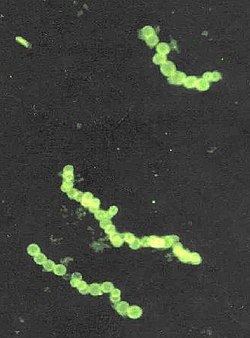| Thiotrichales | |
|---|---|
 | |
| Thiomargarita namibiensis | |
| Scientific classification | |
| Domain: | Bacteria |
| Kingdom: | Pseudomonadati |
| Phylum: | Pseudomonadota |
| Class: | Gammaproteobacteria |
| Order: | Thiotrichales Garrity et al. 2005 |
| Families [1] | |
Fastidiosibacteraceae Contents | |
Thiotrichales is an order of sulfur-oxidizing bacteria within the class Gammaproteobacteria known for their large size and ability to live in sulfur rich environments.